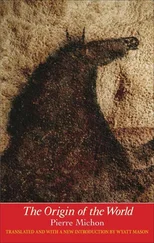Pierre Gilles - The Antiquities of Constantinople
Здесь есть возможность читать онлайн «Pierre Gilles - The Antiquities of Constantinople» — ознакомительный отрывок электронной книги совершенно бесплатно, а после прочтения отрывка купить полную версию. В некоторых случаях можно слушать аудио, скачать через торрент в формате fb2 и присутствует краткое содержание. Жанр: foreign_antique, foreign_prose, на английском языке. Описание произведения, (предисловие) а так же отзывы посетителей доступны на портале библиотеки ЛибКат.
- Название:The Antiquities of Constantinople
- Автор:
- Жанр:
- Год:неизвестен
- ISBN:нет данных
- Рейтинг книги:3 / 5. Голосов: 1
-
Избранное:Добавить в избранное
- Отзывы:
-
Ваша оценка:
- 60
- 1
- 2
- 3
- 4
- 5
The Antiquities of Constantinople: краткое содержание, описание и аннотация
Предлагаем к чтению аннотацию, описание, краткое содержание или предисловие (зависит от того, что написал сам автор книги «The Antiquities of Constantinople»). Если вы не нашли необходимую информацию о книге — напишите в комментариях, мы постараемся отыскать её.
The Antiquities of Constantinople — читать онлайн ознакомительный отрывок
Ниже представлен текст книги, разбитый по страницам. Система сохранения места последней прочитанной страницы, позволяет с удобством читать онлайн бесплатно книгу «The Antiquities of Constantinople», без необходимости каждый раз заново искать на чём Вы остановились. Поставьте закладку, и сможете в любой момент перейти на страницу, на которой закончили чтение.
Интервал:
Закладка:
Chap. II.
Of the Extent of Old Byzantium
THE present Inhabitants of Constantinople tell you, that Old Byzantium stood within the Compass of the first Hill in the Imperial Precinct, where the Grand Seignor’s Seraglio now stands: but I am of Opinion, from what follows it will appear, that it was of a larger Extent. Our modern Writers describe its Situation thus; that it began at the Wall of the Citadel, stretched itself to the Tower of Eugenius , and that it rose gradually up to the Strategium , the Bagnio of Achilles , and the Urbicion . From thence it pass’d on to the Chalcopratia , and the Miliarium Aureum , where there was another Urbicion of the Byzantians : Thence it lengthen’d to the Pillars of Zonarius , from whence, after a gentle Descent, it winded round by the Manganæ and the Bagnio’s of Arcadius , up to the Acropolis . I am inclinable to credit all these Writers, excepting only Eustathius , who tells us, that the Athenians made use of Byzantium , a small City, to keep their Treasure in. But Zosimus , a more ancient Historian, describes Byzantium after this Manner: It was seated , says he, on a Hill, which took up part of the Isthmus, and was bounded by a Bay called Cheras, and the Propontis. At the End of the Portico’s built by Severus the Emperor, it had a Gate set up, upon his Reconciliation with the Inhabitants, for giving Protection to Niger his Enemy. The Wall of Byzantium extended itself from the Eastern Part of the City to the Temple of Venus, and the Sea over-against Chrysopolis: from the North it descended to the Dock, and so onward to the Sea, which faces the Black Sea, and through which you sail into it . This, says he, was the ancient Extent of the City; but Dionysius , a more ancient Writer than Zosimus , as appears by his Account, which was written before its Destruction by Severus , tells us, that Byzantium contain’d in Compass at least forty Furlongs, which is a much greater Extent than the preceding Writers reported it. Herodian informs us, that Byzantium , in the Time of Severus , was the greatest City in all Thrace .
Chap. III.
Of the Rebuilding of Byzantium by Constantine the Great, and the Largeness of it in his Time
IT is recorded by Zonaras , that Constantine being inclinable to build a City, and to give it his own Name, at first pitch’d upon Sardicus a Field of Asia ; afterwards, upon the Promontory Sigeum , and last of all upon Chalcedon and Byzantium , for that Purpose. Georgius Cedrinus is of Opinion, that he first pitch’d upon Thessalonica , and after he had lived there two Years, being wonderfully taken with the Delightfulness of the Place, he built the most magnificent Temples, Bagnio’s and Aqueducts ; but being interrupted in his great Designs by the Plague which raged there, he was obliged to leave it, and passing away for Chalcedon , (formerly overthrown by the Persians , but then upon rebuilding) he was directed by the Eagles frequently carrying the small Stones of the Workmen from thence to Byzantium , where Constantinople ought to be built. Zonaras is of the same Opinion; and only differs as to the Story of the Stones, and says, that they were small Ropes which they used in Building. But this seems to be a Fable taken out of Dionysius a Byzantian Writer, who tells us, that Byzas had been the Founder of Byzantium , in a Place call’d Semystra , seated at the Mouth of the Rivers Cydarus and Barbysa , had not a Crow, by snatching a Piece of the Sacrifice out of the Flames, and carrying it to a Promontory of the Bosporus , directed Byzas to found Byzantium in that Place. But Constantine does not seem to me to have been so oversighted as were the ancient Chalcedonians , for which they stand recorded in the Histories of all Ages. Nay, ’tis distinguishable by any Man of a tolerable Judgment, that Byzantium was a much more commodious Situation for the Roman Empire than that of Chalcedon . The far more ancient Historians, among whom are Sozomen of Salamis and Zosimus , who wrote in the Reign of Theodosius the Less , judged more rationally on this Occasion. They tell us, without taking any Notice of Sardica , Thessalonica or Chalcedon , that Constantine debating with himself, where he might build a City, and call it by his own Name, equal in Glory and Magnificence to that of Rome , had found out a convenient Situation for that Purpose, between old Troy and the Hellespont ; that he had lay’d the Foundations, and raised part of the Wall to a considerable Height, which is to be seen at this Day on the Promontory Sigeum , which Pliny calls Ajantium ; because the Sepulchre of Ajax , which was in that Place, hung over the Chops of the Hellespont : They tell you farther, that anciently some Ships were station’d there, and that the Grecians , when at War with the Trojans , pitch’d their Tents in that Place: That Constantine afterwards came into an Opinion, that Byzantium was a properer Situation; that three hundred and sixty two Years after the Reign of Augustus , he rebuilt, enlarged and fortified it with great and strong Walls, and by an Edict engraven on a Stone Pillar, and publickly fix’d up in the Strategium , near his own Equestrian Statue, order’d it to be called Nova Roma Constantinopolitana . Upon a Computation made, that the Natives were not a sufficient Number to people the City, he built several fine Houses in and about the Forums , of which he made a Present to the Senators and other Men of Quality, which he brought with him from Rome and other Nations. He built also several Forums , some as an Ornament, others for the Service of the City. The Hippodrom he beautify’d with Temples, Fountains, Portico’s , and a Senate-House, and allow’d its Members equal Honours and Privileges with those of Rome . He also built himself a Palace, little inferior to the Royal one at Rome . In short, he was so ambitious to make it rival Rome itself in all its Grandeur and Magnificence, that at length, as Sozomen assures us, it far surpassed it, both in the Number of its Inhabitants, and its Affluence of all Kinds. Eunapius a Sardian , no mean Writer, nay though an Enemy to Constantine , describes the vast Extent of Constantinople , in these Words: Constantinople , says he, formerly called Byzantium, allow’d the ancient Athenians a Liberty of importing Corn in great Quantities; but at present not all the Ships of Burthen from Ægypt, Asia, Syria, Phœnicia, and many other Nations, can import a Quantity sufficient for the Support of those People, whom Constantine, by unpeopling other Cities, has transported thither . Zosimus also, though otherwise no very good Friend to Constantine on the score of his Religion, yet frankly owns, that he wonderfully enlarged it; and that the Isthmus was enclosed by a Wall from Sea to Sea, to the Distance of fifteen Furlongs beyond the Walls of old Byzantium . But to what Extent soever Constantine might enlarge its Bounds, yet the Emperors who succeeded him have extended them farther, and have enclosed the City with much wider Walls than those built by Constantine , and permitted them to build so closely one House to another, and that even in their Market Places, that they could not walk the Streets without Danger, they were so crowded with Men and Cattle. Upon this Account it was, that a great part of the Sea which runs round the City was in some Places dry’d up, where by fixing Posts in a circular Manner, and building Houses upon them, they made their City large enough for the Reception of an infinite Multitude of People. Thus does Zosimus express himself as to the vast Extent of this City, as it stood in the Time either of Arcadius or Theodosius . Agathius says, that in the Time of Justinian the Buildings were so close and crowded together, that it was very difficult to see the Sky by looking through the Tops of them. The large Compass of this City before Justinian ’s Time, we may in some measure collect from an ancient Description of the City , by an unknown but seemingly a very faithful Writer. He assures us, that the Length of the City from the Porta Aurea to the Sea Shore in a direct Line, was fourteen thousand and seventy five Feet, and that it was six thousand one hundred and fifty Feet in Breadth. And yet we cannot collect plainly from Procopius , that in the Reign of Justinian the Blachernæ were enclosed within the Walls, although before his Time the City was enlarged by Theodosius the Less , who as Zonaras and others write, gave Orders to Cyrus the Governour of the City for that Purpose. This Man, with great Diligence and wonderful Dispatch, built a Wall over the Continent from Sea to Sea, in sixty Days. The Inhabitants astonish’d that so immense a Work should be finish’d in so small a Time, cry’d out in a publick manner in the Theatre, in the Presence of Theodosius the Emperor, Constantine built this City, but Cyrus rebuilt it . This drew on him the Envy of his Prince, and render’d him suspected; so that being shaved by the Command of Theodosius , against his Inclinations, he was constituted Bishop of Smyrna . The following Inscriptions made to Constantinus , and carv’d over the Gate of Xylocerum and Rhegium , take Notice of him in these Verses.
Читать дальшеИнтервал:
Закладка:
Похожие книги на «The Antiquities of Constantinople»
Представляем Вашему вниманию похожие книги на «The Antiquities of Constantinople» списком для выбора. Мы отобрали схожую по названию и смыслу литературу в надежде предоставить читателям больше вариантов отыскать новые, интересные, ещё непрочитанные произведения.
Обсуждение, отзывы о книге «The Antiquities of Constantinople» и просто собственные мнения читателей. Оставьте ваши комментарии, напишите, что Вы думаете о произведении, его смысле или главных героях. Укажите что конкретно понравилось, а что нет, и почему Вы так считаете.












